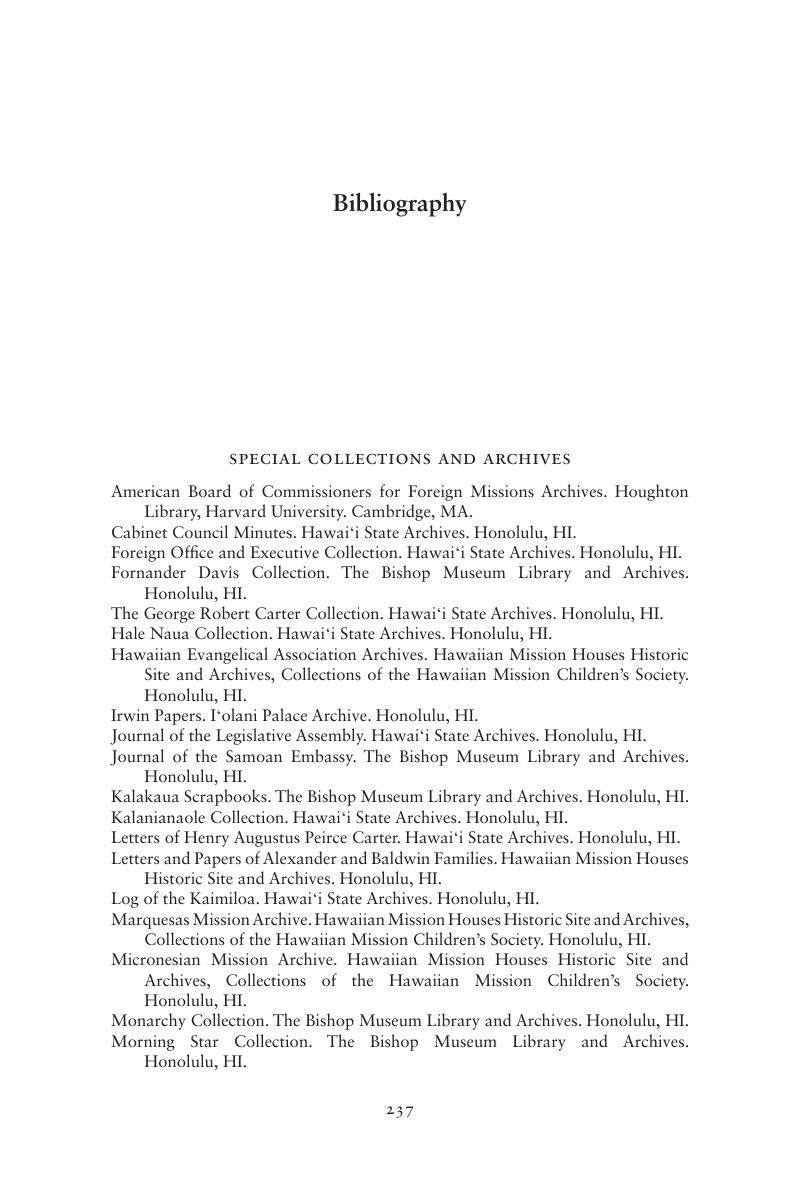Book contents
- Return to Kahiki
- Studies in North American Indian History
- Return to Kahiki
- Copyright page
- Contents
- Acknowledgments
- Abbreviations Used in Footnotes
- Introduction: Mai Kahiki Mai: Out from Kahiki
- 1 Ke Ao A Me Ka Pō
- 2 Among the Wild Dogs
- 3 A Kindred People
- 4 The Hawaiian Model
- 5 “There Is Nothing That Separates Us”
- 6 Makaʻāinana or Servants of the Dollar?
- Conclusion
- Glossary
- Bibliography
- Index
- References
Bibliography
Published online by Cambridge University Press: 24 January 2018
- Return to Kahiki
- Studies in North American Indian History
- Return to Kahiki
- Copyright page
- Contents
- Acknowledgments
- Abbreviations Used in Footnotes
- Introduction: Mai Kahiki Mai: Out from Kahiki
- 1 Ke Ao A Me Ka Pō
- 2 Among the Wild Dogs
- 3 A Kindred People
- 4 The Hawaiian Model
- 5 “There Is Nothing That Separates Us”
- 6 Makaʻāinana or Servants of the Dollar?
- Conclusion
- Glossary
- Bibliography
- Index
- References
Summary

- Type
- Chapter
- Information
- Return to KahikiNative Hawaiians in Oceania, pp. 237 - 248Publisher: Cambridge University PressPrint publication year: 2018



